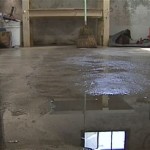How to Fix Sewer Backup in Basement: A Comprehensive Guide
Sewer backups in the basement can be a nightmare, causing extensive damage and unpleasant odors. Prompt action is crucial to minimize the impact and ensure the safety of your home and family.
Identify the Source of the Backup
The first step is to determine the source of the backup. Check the following areas:
- Main sewer line: This is the primary pipe that carries wastewater from your home to the city's sewer system. Clogs or cracks in this line can cause sewage to back up into your basement.
- Cleanout: A cleanout is a small, capped pipe that allows access to the main sewer line for cleaning or inspection. If the cleanout is clogged, it can prevent water from draining properly.
- Lateral sewer line: This is the pipe that connects your home's plumbing system to the main sewer line. It can also become clogged or damaged.
Clear Clogs Manually
If the clog is not too severe, you may be able to clear it manually using a drain snake or auger. Insert the snake into the drain and work it back and forth to break up the clog. Once the clog is clear, flush the drain with hot water.
Call a Plumber
For major clogs or damage to the plumbing system, it is advisable to call a licensed plumber. They have the necessary equipment and expertise to diagnose and fix the problem effectively.
Inspect and Repair the Sewer System
Once the backup is cleared, it is important to inspect the entire sewer system to identify any potential issues that could lead to future backups. A plumber can use a camera inspection to examine the interior of the pipes and identify cracks, roots, or other obstructions.
Maintain Your Sewer System
Regular maintenance is crucial to prevent sewer backups. Follow these tips:
- Flush the drains regularly with hot water to remove soap scum and other debris.
- Avoid pouring cooking grease or oils down the drains, as they can solidify and clog the pipes.
- Install drain covers in sinks and showers to catch hair and other objects that could block the drains.
- Schedule periodic professional inspections and cleanings to identify and remove potential problems before they become major issues.
Additional Considerations
In the event of a sewer backup, take the following precautions:
- Do not use any drains or toilets in the basement, as this can worsen the backup.
- Open windows and doors to ventilate the basement and reduce odors.
- Wear protective gear, such as gloves and a mask, when cleaning up sewage.
- Contact your local health department for guidance and possible inspection.
Fixing sewer backups in the basement can be a daunting task, but by following these steps and taking proper precautions, you can minimize the damage and ensure the health and safety of your home.

Basement Drain Backing Up Here S What To Do Right Now Servicemaster

6 Sewer Backup Causes How To Fix Them Cates Heating And Cooling

Sewer Backup Basement Drain Flood Causes Cyclone Valves

Sewage Backup In Basement Causes What To Do How Prevent It

How To Troubleshoot Sewer Line Problems Pipe Spy

How To Handle A Sewage Backup In The Basement

Sewage Backup What Causes It To Happen And How Fix

What To Do After A Sewage Backup How Prevent And Cleanup

Basement Drain Backing Up Here S What To Do Right Now Servicemaster

How To Stop A Sewage Backup In Your Basement The Sump And Pump Co
See Also








